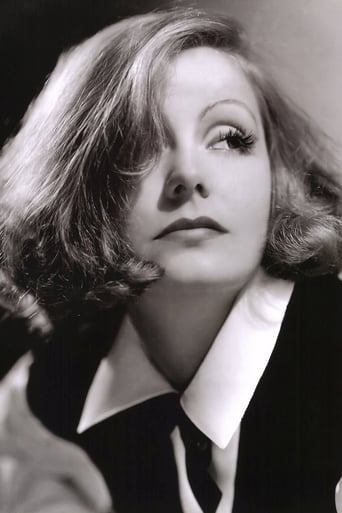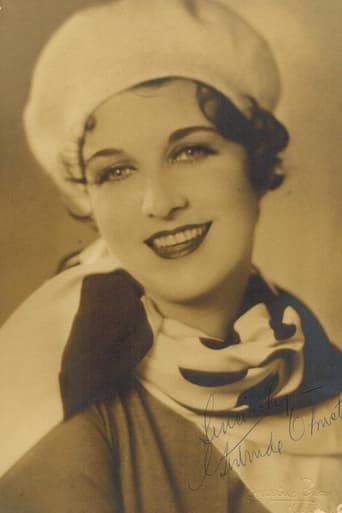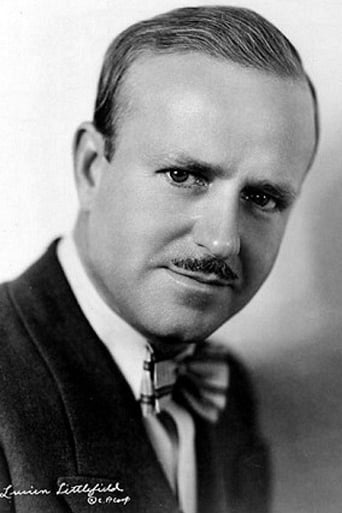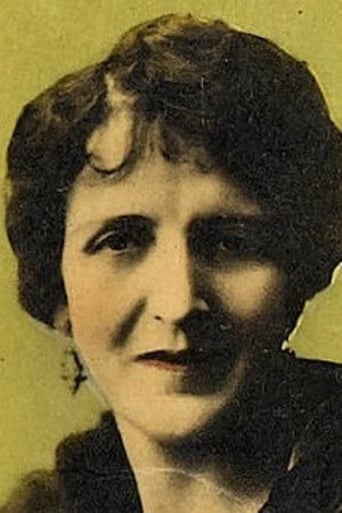BelSports
This is a coming of age storyline that you've seen in one form or another for decades. It takes a truly unique voice to make yet another one worth watching.
Arianna Moses
Let me be very fair here, this is not the best movie in my opinion. But, this movie is fun, it has purpose and is very enjoyable to watch.
Mandeep Tyson
The acting in this movie is really good.
Fleur
Actress is magnificent and exudes a hypnotic screen presence in this affecting drama.
rickodonovan
It is remarkable that short of some 60 minutes of The Divine Woman, Greta Garbo's entire career and filmography has survived for our enjoyment. Torrent, her first American film after two feature-length European films, is remarkably impressionable. Now for the first time seen on the DVD release from Warner Bros. (it's previous availability consisted of a piecemeal ten parts on You Tube), her first MGM vehicle is absolutely stunning! The MGM back lot sets are resplendent of old Spanish countryside, Monta Bell's direction is brilliant, and Garbo's technique- from subtle gestures to facial expressions in closeups are very much in evidence. In yet another great Ibanez novel adapted to the screen, the heroine is a Spanish girl of a poor family who is spurned by a rich lover and runs off to Paris to pursue a career as an operatic singer. She subsequently returns to her small Spanish town a famous diva. In essence a story of the conflict of romantic love versus cultural duty and societal trappings. There are many great scenes. There is one erotic shot in particular in which leading man Ricardo Cortez lays in the lap of Garbo that clearly provided the inspiration for the now legendary love scene with Garbo and John Gilbert in Flesh and the Devil. The exteriors during the flood scene rival those shot in The Temptress. Altogether, great casting, tremendous special effects and an actress who captivated the movie-going public then as now make for an early work in the development of a film icon that surprises and delights. Where I had once thought it merely hinted at an astounding talent yet to come, Torrent shows clearly that by 1927 Garbo was already delivering the goods.
bkoganbing
The film Torrent was a first and a last for Greta Garbo. It was her first American made film at MGM, the only studio in the USA that she would ever work at. It was also the last time that someone else was billed above her in the credits, that being her leading man her Ricardo Cortez.Torrent is based on the popular Spanish writer's Vicente Blasco Ibanez's work Entre Naranjos. It concerns a pair of mismatched lovers, Garbo and Cortez, who can't quite get together, mostly due to the machinations of Cortez's mother Marta Mattox. Mattox is a wicked woman who has some set ideas about who her son should be marrying. Remember this is Spain and such arranged marriages were still even in those times quite proper. Mattox has Gertrude Olmstead in mind as a daughter-in-law, she's the offspring of Mack Swain a man grown rich in hog raising. Swain provides a few moments of comic relief with his tender concern for the piglets before they grow into big old hogs to be butchered.Blasco Ibanez had previous novels The Four Horseman Of The Apocalypse and Blood And Sand previously filmed with Rudolph Valentino in the lead. It might have been interesting if Valentino had done this one with Garbo, but he might have been beyond film making when this was done. In any event, one of the Valentino wannabes Ricardo Cortez fills in with the male lead.One reason Valentino might not have wanted this film is because clearly the lead character is Garbo's unlike the other two works previously mentioned. When she gets done dirt by Cortez who is doing what Mattox and her 'adviser' banker Tully Marshall tell her, she leaves Spain and goes to France where she becomes a great opera star. And leads quite the scandalous life there.When she returns to Spain and tries to rekindle things, Mattox is even more outraged. She has a political career in mind for her son. Cortez is now running for the Spanish Parliament which curiously enough is called the Cortes. The title refers to a flood and a dam breaking causing all kinds of havoc in the countryside. Cortez in fact braves the Torrent in a row boat trying to rescue Garbo from harm's way. When they do get together they have a brutally frank discussion, the brutality coming from Garbo.The special effects here, primitive though they seem now are quite remarkable for their time. They look very similar to the shots used in 20th Century Fox's The Rains Came that came out in 1939 and that won an Oscar for Special Effects. Unfortunately for Torrent it came out one year before Oscar made his debut.I'm not going to give any endings away so you'll have to see the film to find out if Cortez and Garbo get together in the end. Garbo rightly won rave reviews for her performance and in an age when exaggerated gestures was the norm in silent screen acting, she was remarkably subtle in her role. So she would be the rest of her career, she had a remarkable face for closeups.Although Greta Garbo would go on to do far better work than Torrent, this film is still a fitting debut for her on the American big screen and holds up very well for today's audience.
arneblaze
Garbo's first two films were adaptations of Ibanez novels. This first, TORRENT, fares much better than the second, THE TEMPTRESS. The latter was overlong and uninteresting, giving Garbo little to do but stand around and look seductive until her last scene, when she is finally allowed to act. Here in TORRENT, she is in total command from beginning to end and as convincing as a Spanish peasant girl, all innocent and loving, as she is portraying a famous diva.She and Ricardo Cortez are in love but he is a landowner and his mother forbids the alliance, causing the young girl's family to be ousted from their home. The father takes his daughter off to Paris where her trained voice (she had been taking lessons from the local barber) is sure to be a hit. Mother is left behind. Cortez gets his second chance when the famous La Brunna (Garbo) returns to her home to see her mother and entice Cortez yet again. He fails to win her and she leaves. As she is about to depart for America he visits her again but again he fails to have the courage to "break his mother's heart" and marry against her wishes.The only thing difficult to sustain us through all this is that Garbo still loves him although he is obviously a weak-willed, mother-dominated man. Garbo is radiant and totally believable throughout.The film holds up well despite some plot problems. Why did the moneyed and successful La Brunna allow her mother to continue to live in poverty as a charwoman? Why is everyone in the home town so dim as to not figure out how La Brunna got her wealth until the confrontation scene where even Garbo's mother rejects her for being "a bad woman?" She does have a wonderful scene when confronted by Cortez, she blames him for her state, since his initial rejection of her led her to her current path for survival.Despite these bits of unbelievability, this tale of lost love and bittersweet romance plays well. In Garbo's first two films she was paired with "latin" hopefuls, Ricardo Cortez and Antonio Moreno. Neither could hold their own against her, although Cortez is memorable here in the last scenes as an older broken man.TCM shows a tinted print using four tones (sepia, blue, lavender, red) with a fine orchestral score and sound effects. The new score is by Arthur Barrow. There is some obvious deterioration in some of the title cards. The special effects of a dam breaking during a rain storm and the torrent gaining on two characters in a boat are quite well done. Another dam breaks in THE TEMPTRESS- Ibanez was fond of this device, no doubt.Garbo wears two wonderful creations - a striped chinchilla outfit and a harlequin outfit. There is a brief kissing scene where Cortez is prone and she takes the active on top position - this was to be repeated in FLESH AND THE DEVIL with John Gilbert.All in all, this tale of honor, love and the importance of being true to oneself is well done - the double irony at the end is quite poignant.
Recommended for all, not just Garbo fans.
Doug Phillips
I was given the opportunity to see this 1926 film in a magnificently restored theater that was once part of the extensive Paramount chain of vaudeville houses. This Paramount has a ‘Mighty Wurlitzer' organ – also magnificently restored -- that was used to accompany the silent films of the day.We were fortunate enough to have Dennis James, a key figure in the international revival of silent films at the Mighty Wurlitzer playing appropriate music and thematic compositions fitting to the action on the film. The print was a nearly perfect digital copy of the rapidly decaying nitrate negative and the entire experience was a once-in-a-lifetime chance to see a silent film as it was meant to be seen.This was Greta Garbo's first American film. She was only 20 years old but already had 6 Swedish films in her repertoire.It is somewhat ironic that this is a silent film about an opera star; even though the Mighty Wurlitzer added immensely to the mise-en-scene, it was necessary to leave much to the imagination.Modern audiences, for the most part, do not understand silent films… Acting was different then, with expansive gestures and broad facial expressions. Therefore audiences laugh at inappropriate times – the acting is seen as ‘hammy' and over-done – but it was simply the style of the period.Garbo, with all her subtlety, did much to usher in the new age of acting: she could say more with a half-closed eye and volumes could be read into a downward glance or a simple shrug. She exemplifies the truism that `a picture is worth a thousand words.'Even though this is Garbo's first American film it is pretty obvious the studio knew what they had on their hands: This was MGM filmmaking at its best. The sets and costumes were magnificent. The special effects – which by today's standards are pretty feeble – were still electrifying and amazing.The script by Vicente Blasco Ibanez (from the novel by Entre Naranjos) would seem to be tailor made for Garbo; it showcases her strengths, magnifies her assets and there is no pesky language problem to deal with: a Swedish actress can play a Spanish temptress with no suspension of disbelief on our part.Her co-star was MGM's answer to Rudolph Valentino: Ricardo Cortez. He does an admirable job and did something that few romantic stars of the day ever would have done in a film: allow himself to look unnactractive, appear foolish and to grow old ungracefully.There are some fairly good character parts that are more than adequately acted – especially when you consider the powerhouse that was Garbo. Notable among them are Lucien Littlefield as ‘Cupido' and Martha Mattox as ‘Doña Bernarda Brull.'This is when the extraordinary cinematographer, William H. Daniels, met Garbo – they went on to make 20 films together. (He was the cinematographer on 157 films and his career spanned five decades!) He was able to capture her ethereal beauty and it was his photography that was primarily responsible for the moniker by which she became known: The Divine Garbo. Without his magnificent abilities she would not have been the success that she was.Seeing this film is an all-too-rare opportunity: if you ever have the chance, do not miss it.




